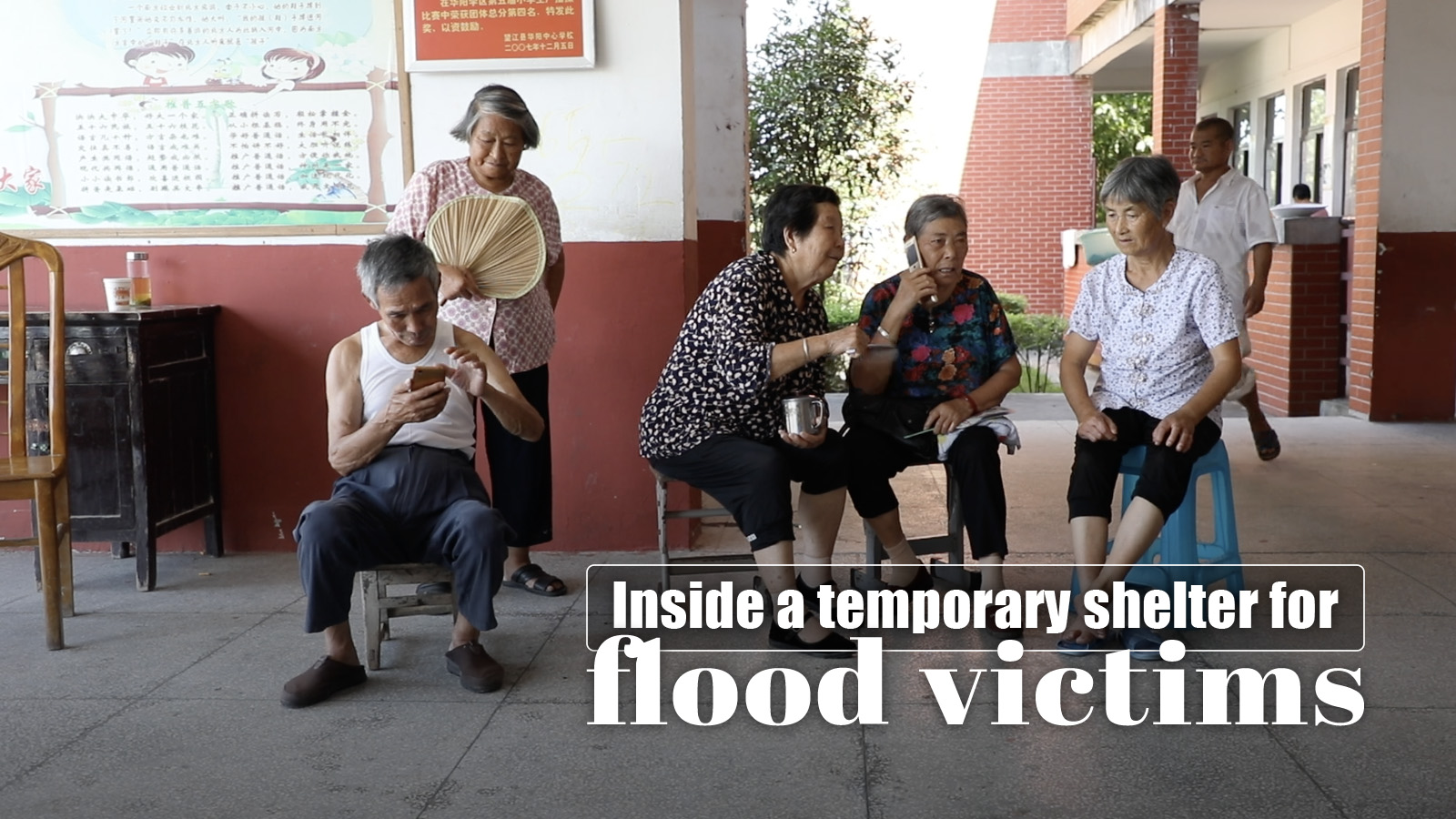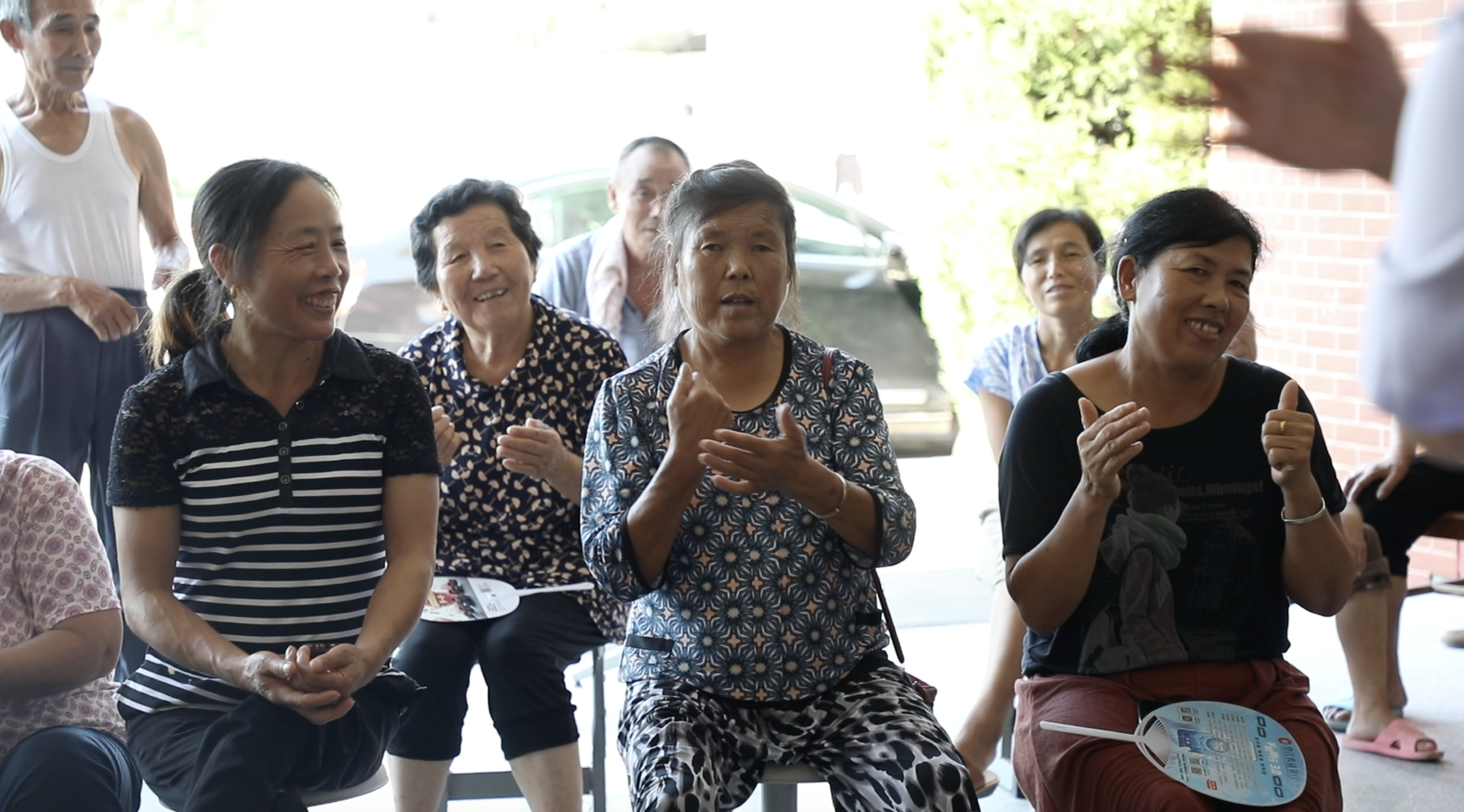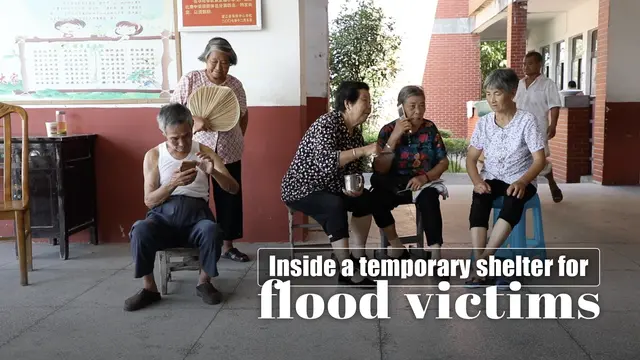03:57

Outside Mingde primary school of Wangjiang County in eastern China's Anhui Province, a red banner hung at the gate. "Love your life. Avoid drowning."
The slogan served as a reminder for flood victims who resided at the school now turned into a temporary shelter for flood victims. When they initially arrived at the shelter, almost all residents wanted to go back and visit their flooded homes, said Li Lanlan, a local government official responsible for running the temporary shelter.
They were concerned about their flooded rice, rapeseed, and cotton fields. Some had their houses submerged by floodwaters.
Severe flooding engulfed eastern China this summer. Several villages in Wangjiang County, a few dozen kilometers from a local river that feeds into the Yangtze, got the mandatory evacuation order to move their entire residents to less flood-prone areas.
To house those flood victims, three primary schools in the county were remodeled into temporary shelters since early July, and with the floodwaters unabated, the shelters became their temporary home.

Residents listen to a lecture given by mental health expert at the shelter. Qi Jianqiang/CGTN
Mingde shelter was one of the largest in Wangjiang County. Inside the shelter, one saw the disproportionate presence of old people – more than 80 percent were over the age of 60 – a reflection of the fact that rural China was now populated by an aging population since most young people joined the relentless current of urban migration.
At the shelter, classrooms were transformed into dorm rooms. Each room houses around 12 flood victims, with rows of cots placed side-by-side next to each other. In the suffocating heat, ceiling fans can barely cool the room. Elders spent hours tossing and turning because they found it too hot to fall asleep.
But still, most found it good to have a place and someone to turn to in the flood-hit area. "At least here, I don't need to worry about food, lodging, and daily necessities," said Wu Zhuxiang, a 66-year-old resident at Mingde shelter. In our conversation, she mentioned several times that food at the shelter was good, "even better than what we had at our own homes."
Meals and lodging at the shelters were provided free by the government, according to Li, and so did regular physical checkups. Medical personnel stayed on site every day in case any resident fell ill. Even psychological counseling was provided for residents who found it hard to deal with the fact that their homes were flooded.

A volunteer helps children at the shelter with their school work. Qi Jianqiang/CGTN
What prompted the shelter to offer psychological counseling is that at the initial stage of resettlement, sporadic conflicts arose. Residents feared that their livestock would drown or be left starved to death and were eager to leave.
On the other hand, local authorities were adamant in preventing them from doing so due to the looming risks of rising floodwaters. Anyone who wanted to leave the shelters needed to file a report and ask for permission from the local authorities.
"The first few days after residents resettled at the shelter, I got numerous requests for leaving every day," said Li.
When thinking about their flooded houses and crops, villagers are likely to experience anxiety, said Fang Fa, a mental health expert at Mingde shelter who provided counseling. Instead of trying to persuade villagers out of going back homes, local authorities should acknowledge their anxiety and come up with concrete ways to reassure them that losses would be minimized, he added.

Residents follow the mental health expert's lead in doing physical exercise. Qi Jianqiang/CGTN
Group activities were organized frequently at the shelter, like square dancing, badminton matches, said Liu Sha, volunteer at Mingde shelter, who also saw her home affected by the flooding. Sports are intended to divert their attention away from the painful memories of flooding, she said, noting that her daily job responsibilities include chatting and playing with elders to rid their sense of loneliness.
But for the very few young people at the centers, the loss of privacy was real. "Even if you first arrived, you will notice that living here is completely different from living at home," said a 22-year-old resident at the center who preferred not to reveal her name. She called life in the center "living in the pre-historic time" because everything in the center was communal, taking a shower, eating meals, and going to sleep.
But the shelter has special meaning for young flood victims, most of whom are left-behind children in rural China. They stayed at the shelter with their grandparents while their parents migrated to more economically advanced regions for work. Xia Xinyi, a 9-year-old resident at the shelter, said she could only see her parents three times a year. "I have volunteer teachers here to help me with the school work," she said with the maturity of a kid above her age.
The shelter was largely run by volunteers, many are flood victims themselves. Running relief operations requires lots of detailed work, setting up sheltering facilities, registering flood victims, serving meals, general housekeeping, and helping young flood victims with school work, and volunteering was needed more than ever.

Lu offers a free hair cut for residents at the shelter. Qi Jianqiang/CGTN
Even children at the shelter were involved in some form of volunteering work, e.g., helping with the distribution of donated items. However, the point was to let the children feel they were part of the community, said Liu.
The oldest volunteer at the shelter, was 70-year-old Lu Dajin, a barber for fifty years. Inside the shelter, he offered free hair cut for his fellow flood victims. And due to his excellent skills, requests were constant. He had charged no one because everyone at the shelter was hit hard by the floods.
"Money isn't the most important; life is," said Lu. "The shelter is all about people helping people."
Videographer: Qi Jianqiang
Video editor: Yu Jing
Writer: Yu Jing
Cover image: Li Jingjie
Fang Ming and Xu Changshou also contributed to this story.
 简体中文
简体中文





